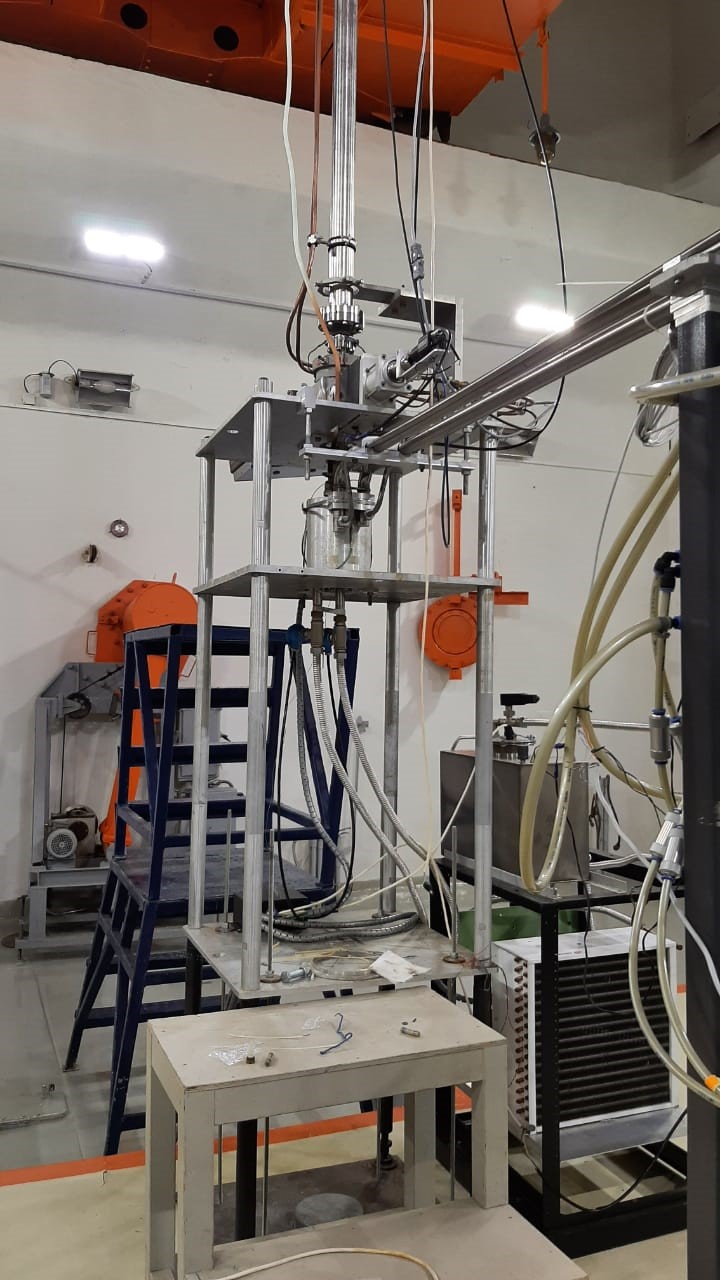- Details
Agenda:
1. Report and proposal for prolongation of the project TANGRA.
Speaker: Yu. N. Kopatch
2. Report and proposal for prolongation of the project "Modernization of the EG-5 accelerator and development of its experimental infrastructure".
Speaker: A. S. Doroshkevich
3. Report and proposal for prolongation of the project "Emission of Neutrons and Gamma-quanta in Reactions Induced by Neutrons (ENGRIN)".
Speaker: Sh. S. Zeinalov
4. Elections for the positions of:
4.1. A researcher, SINNI DNP FLNP
Applicant: N.A. Fedorov
4.2. A researcher, DNICM DCMRD FLNP
Applicant: M. Erdauletov
5. Miscellaneous.
- Details
"Pneumatic transport system REGATA-2 at the IREN facility"
Lobachev V.V., Dmitriev A. Yu., Borzakov S.B., Smironov A.A., Zhironkin I.S., Shvetsov V.N.
The IREN facility makes it possible to obtain neutrons or gamma quanta, depending on the type of target used. The REGATA-2 pneumatic transport system was developed at the Bulgarian Academy of Sciences for the applied use of neutron or photon fluxes. The project was successfully implemented at FLNP IREN facility.
The pneumatic transport system provides studies of the elemental composition of various origins samples, including short-lived isotopes with a half-life of about one minute or more. With the help of neutron activation analysis, ceramics were studied using short-lived isotopes, which significantly expanded the picture of the elemental composition of the samples. The first experiments on the use of gamma activation analysis were carried out, during which the isotopes in the irradiated samples were qualitatively determined. Currently, an active modernization of the pneumatic transport system is being carried out – a touch control panel has been implemented, which will completely replace the electromechanical one, interaction has been established with the activation analysis database.
This report will present an overview of functional blocks of the pneumatic transport system, their finalization and implementation at the IREN facility, the results of experiments on neutron and gamma activation analysis, steps to modernize the pneumatic transport system, the implementation of new options and proposals for the improvement of the methods used.
- Details
Agenda:
1. Report and proposal for prolongation of the project TANGRA.
Speaker: Yu. N. Kopatch
2. Report and proposal for prolongation of the project "Modernization of the EG-5 accelerator and development of its experimental infrastructure".
Speaker: A. S. Doroshkevich
3. Report and proposal for prolongation of the project "Emission of Neutrons and Gamma-quanta in Reactions Induced by Neutrons (ENGRIN)".
Speaker: Sh. S. Zeinalov
4. Miscellaneous.
- Details
"Unusual magnetism in rare-earth ion systems with strong electronic correlations"
Savchenkov P. S. (NRC "Kurchatov Institute", Moscow, Russia)
The results of neutron research of the characteristic features of electronic states in systems of rare-earth ions with strong electronic correlations are discussed in the report.
It is shown how the effects of the crystal field, exchange interaction and hybridization between localized and band electrons, as well as their mutual competition lead to the implementation of "exotic" magnetic states: "induced" magnetism and the coexistence of a long-range magnetic order with strong spin fluctuations. In particular, features of magnetism are described in systems of rare-earth ions with a singlet ground state: EuCu2Si2, PrNi, SmB6. The development of theoretical and model concepts for interpreting the results obtained is presented.
- Details
"Dynamic bending of a fuel rod. Motion equation."
Verhoglyadov A.E.
In the process of working on the project of a new NEPTUN pulsed reactor, the phenomenon of dynamic bending was discovered – a feature of the dynamics of pulsed reactors that does not appear in reactors of other types, but plays a significant role in evaluating the stable operation of the reactor. Movement of fuel elements (fuel rods) under the influence of periodically changing temperature can lead to high changes in reactivity and fluctuations of the reactor power. To accurately simulate the operation of the reactor, it is necessary to know the shape of the fuel element at the time of the next power pulse. Since numerical methods for solving this dynamic problem of thermoelasticity require too much computation time, an analytical method was applied.
The report will present the first results of the numerical-analytical solution of the equation of forced oscillations of a fuel rod, as well as the prospects for using the method in studying the dynamics of the NEPTUN reactor.



